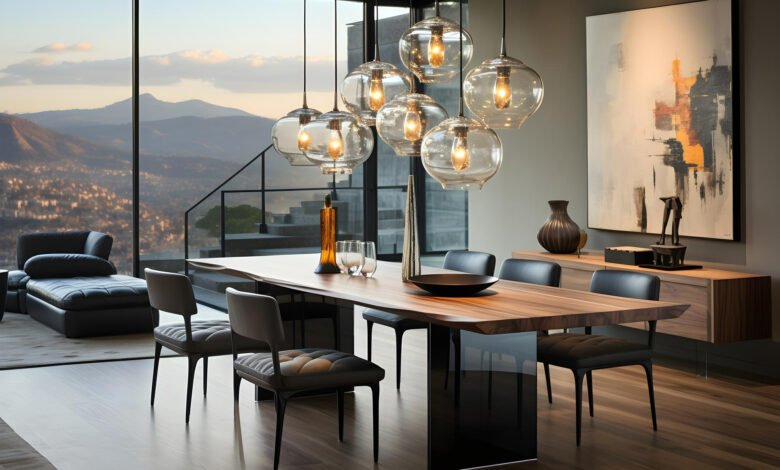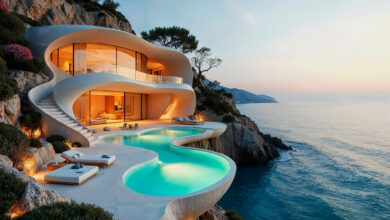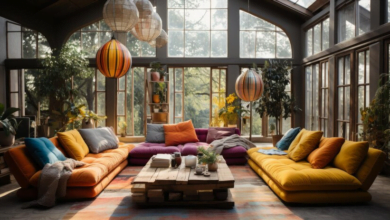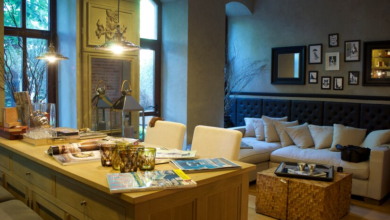Where is Graphic Design Used in Architecture and Interior Design?

When one thinks of design, the mind often captures images of architectural marvels and perfectly decorated interiors. But what we might not realize is the fundamental role that graphic design plays in shaping these spaces. Today, we’re going to explore the question ‘where is graphic design used in architecture and interior design?’ and understand the significance and impact graphic design has on both disciplines.
What is Graphic Design?
Graphic design is the art of planning and producing ideas and messages through visual communication that uses typography, imagery, color, and layout. It involves a wide range of mediums, including print, digital, environmental, and multimedia. Graphic designers employ their creativity and specialized skills to convey messages, and emotions, and solve problems in a visually compelling manner.

Where is Graphic Design Used in Architecture and Interior Design?
So, where exactly is graphic design used in architecture and interior design? Let’s find out.
1. Wayfinding Systems and Signage
Ever felt like a tiny ant in a giant maze? That’s what navigating a huge airport, or a maze-like hospital can feel like. Effective wayfinding systems are crucial in such environments, and this is where graphic design takes the lead. These designers don’t just throw up random signs. They collaborate with architects and interior designers through the design phases to create a seamless experience.
They pick easy-to-read bold fonts, intuitive maps, and clear signage including strategically placed symbols that are universally understood (think airplanes for gates and toilets for restrooms!). Color coding is used to create simple pathways to guide individuals through complex spaces. It’s all about making you feel like you know exactly where you’re going, even in the most unfamiliar of places.
2. Brand Identity
Think about your favorite stores. The logo they use is probably the first thing you notice, right? But it’s not just about the logo. Graphic designers create a whole visual language for a brand, from the colors on the walls to the fonts on the signs. From logo design to the choice of materials, through clever use of typography, color palettes, and imagery, graphic designers convey messages for brand identity and personality. For example, a playful font and bright colors might tell you a store is young and energetic whereas clean lines and natural materials could say a company is professional and reliable. It’s all about creating an experience that connects people with the brand.
3. Augmented Reality Integration
The role of graphic design in architectural and interior design has extended to the integration of augmented reality (AR). Graphic design helps craft AR experiences that overlay digital content onto physical spaces, offering immersive and interactive experiences for users. From virtual furniture placement to interactive architectural walkthroughs, AR allows users to visualize the future and give them a better understanding of architectural and interior design concepts.
But how, and where is graphic design used in architecture and interior design here? Imagine you’re at a furniture store and use an app on your phone to see how that new armchair would look in your living room before you even buy it! Or you’re walking through a new office building before it’s even built, using AR to see the layout and design. That’s the magic when graphic design, architecture, and interior design come together.
4. Data Visualization in Architectural and Interior Design
Architects and interior designers continue to leverage graphic design to visualize complex datasets and analytics within their designs. This involves using raw data and translating it into graphics, charts, and diagrams that help in decision-making and communication of insights effectively. Graphic designers collaborate closely with architects and interior designers to integrate data visualization into architectural renderings, floor plans, and interior layouts. This could be sun path diagrams showing sun exposure, circulation diagrams that depict movement and flow in spaces, or a cool flow chart that maps out employee traffic.
Relationship between Graphic Design, Architecture, and Interior Design
Now that we’ve answered, ‘Where is graphic design used in architecture and interior design?’ Let’s look at the relationship between these three design fields.
Architects design the bones of a space, its structure, and its layout. Interior designers highlight the architectural elements to make it functional and beautiful. They choose the right furniture, materials, and colors that create a certain mood. But sometimes, a space can feel a little…lifeless. That’s where graphic design steps in. Graphic designers are the storytellers of the built environment. They use visual communication –signs, murals, even color palettes – to energize a space. They might use the company logo throughout the office to create a strong brand identity or maybe they’d add a striking mural in a hospital waiting room to create a calming atmosphere. Perhaps they’d design clear and concise wayfinding signs to help people navigate a large building.
Final Words
So, where is graphic design used in architecture and interior design? Everywhere! It serves as a powerful bridge between architecture and interior design. From captivating murals to clear signage, graphic design is a storyteller that has the visual communicative strength that shapes how we experience the world around us. Let’s continue to celebrate the symbiotic relationship between graphic design, architecture, and interior design.
Reference: Architectural Digest



